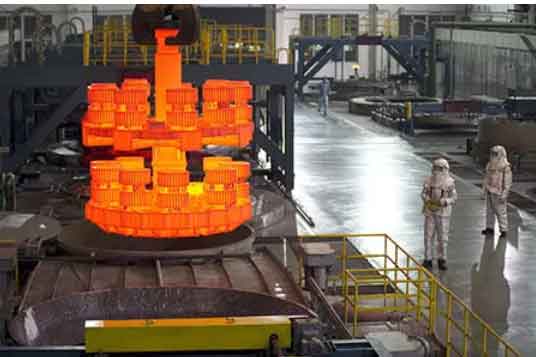Heat treatment is crucial for ensuring the mechanical properties and performance of spur gears in high-temperature applications. High temperatures can significantly impact the material properties of gears, leading to dimensional changes, reduced strength, and increased wear. Here are some considerations for heat treating spur gears for high-temperature applications:

- Material Selection: Choosing the right material is critical for withstanding high temperatures. Heat-resistant alloys such as alloy steels, stainless steels, and superalloys are commonly used for high-temperature gear applications. These materials have excellent high-temperature strength, oxidation resistance, and thermal stability.
- Preheating: Preheating is often employed before the actual heat treatment process to minimize thermal shock and reduce the risk of distortion. Controlled preheating ensures a gradual temperature increase and helps achieve uniform heating throughout the gear.
- Solution Treatment: Solution treatment involves heating the gear to a specific temperature range to dissolve any precipitates or impurities in the material. This process helps improve the material’s high-temperature properties and uniformity. Care must be taken to ensure the gear is held at the solution treatment temperature for an appropriate duration to achieve the desired material transformation.
- Quenching: Quenching is a critical step in the heat treatment process to rapidly cool the gear and lock in the desired material properties. For high-temperature applications, it is essential to select a suitable quenching medium that provides rapid and uniform cooling, such as air, oil, or polymer-based quenchants. The quenching process must be carefully controlled to avoid excessive distortion or cracking.
- Tempering: Tempering is performed after quenching to relieve internal stresses and improve the toughness and dimensional stability of the gear. The tempering temperature is crucial and must be carefully selected to achieve the desired balance of hardness and toughness for high-temperature service. Tempering also helps reduce the brittleness that can occur as a result of the quenching process.
- Surface Coatings: In high-temperature applications, applying suitable surface coatings can provide additional protection against oxidation, corrosion, and wear. Coatings such as nitriding, ceramic coatings, and thermal barrier coatings can improve the gear’s surface hardness, wear resistance, and thermal insulation properties.
- Post-Treatment Machining: After heat treatment, final machining operations may be necessary to achieve the desired gear geometry and dimensional accuracy. Machining should be carefully performed to avoid introducing excessive heat or stress that could compromise the heat-treated properties.
It is important to note that heat treatment processes for high-temperature applications should be carefully designed, considering factors such as the specific material being used, the operating temperature range, and the required mechanical properties. Collaborating with heat treatment specialists and following industry standards and specifications can ensure optimal heat treatment processes for spur gears in high-temperature applications.
